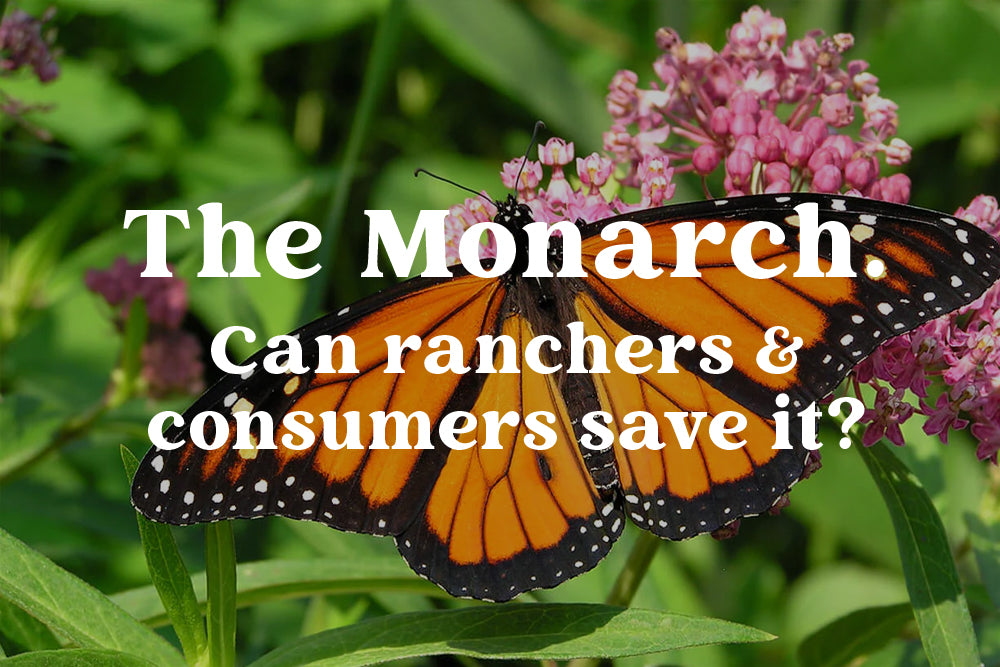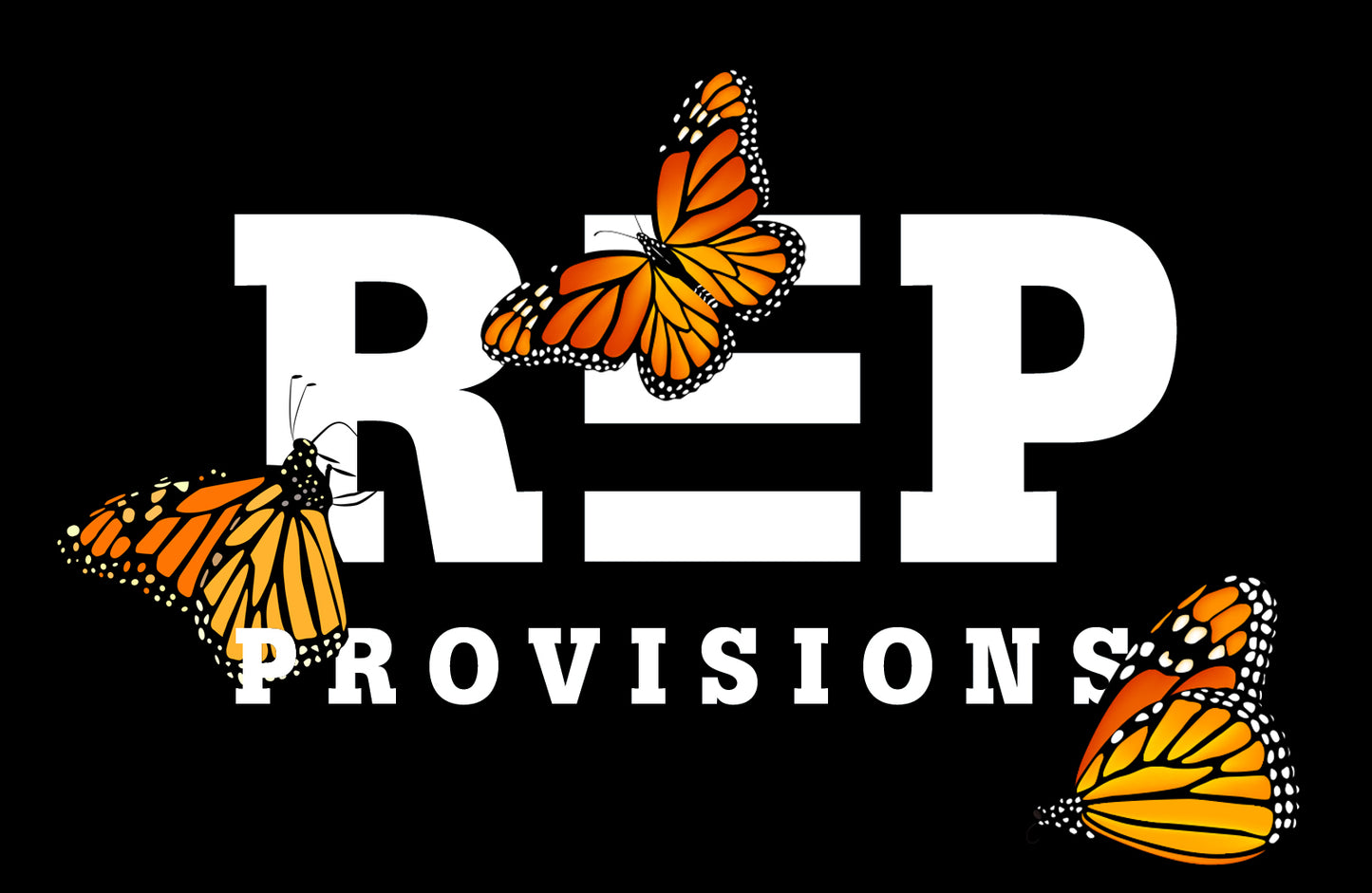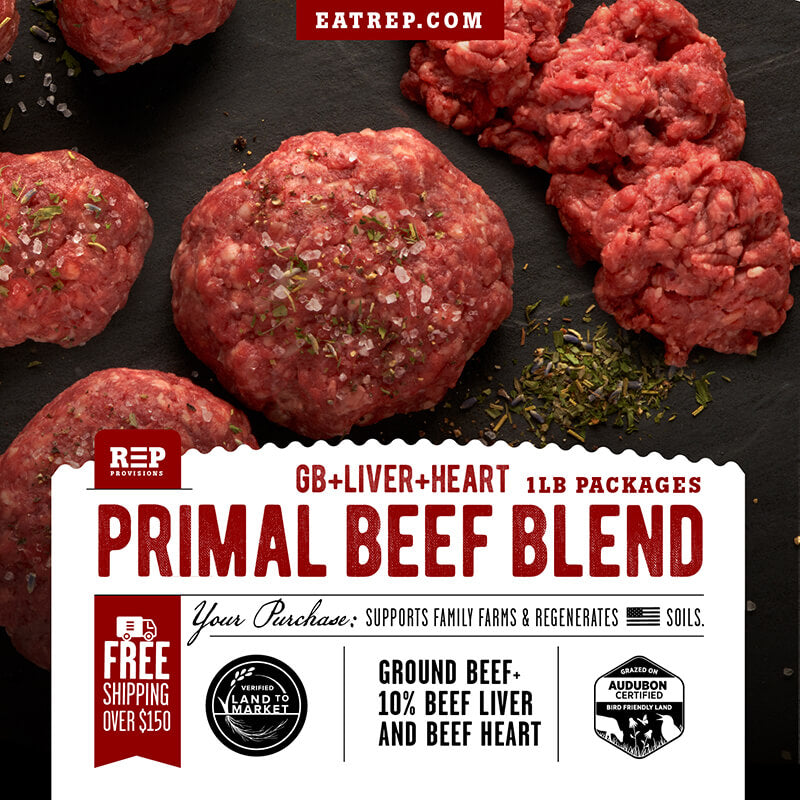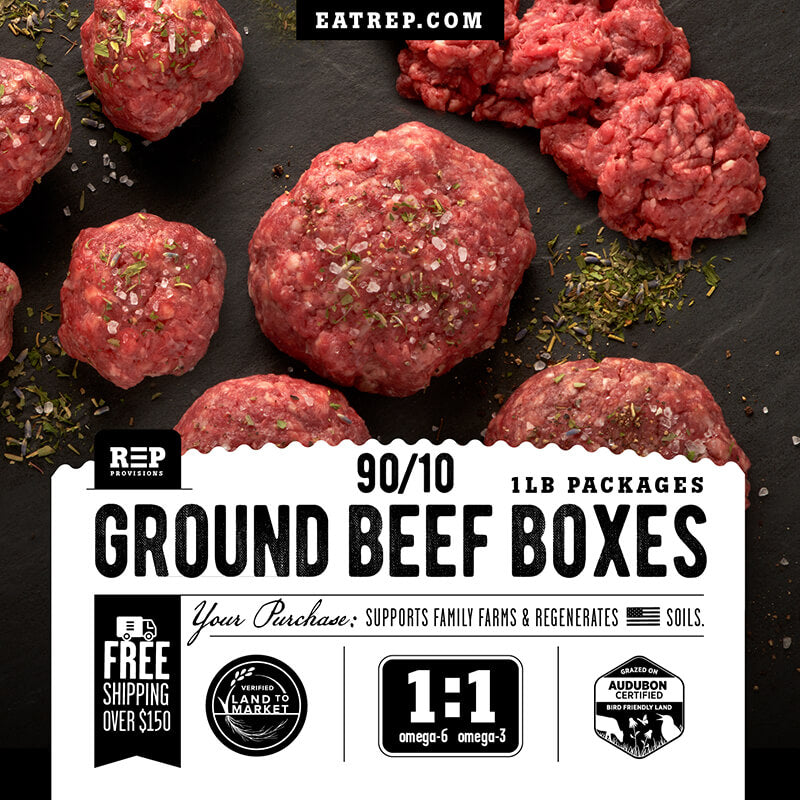
Join us in saying hello to milkweed, and goodbye to monocultures.
Synonymous with regeneration, the monarch butterfly symbolizes transformation, hope, and rebirth. It’s captured the hearts of people, evoked stories, rituals, ceremonies, and awe for centuries.
As a regenerative meat company, our newest initiative to generate habitat and food for this brilliant butterfly feels more like a partnership, than a one sided exchange. If we’re going to transform our food system as one that heals instead of hurting our planet, people, and all living creatures on it, we’re going to need all the help we can get.
For each Verified regenerative meat box sold, we’re planting 100 milkweed seeds on our ranches and prairie lands to restore monarchs migration corridors, and that’s not all.

Tiny but Tough, Monarch Migrations Inspire Cultures Across the Americas
Two monarch butterfly populations are native to North America; west of the Rockies and east. Unable to survive the cold winter, every late summer to fall the northeastern population begins an approximately 3,000 mile journey from Canada and the U.S. down to southwestern Mexico.
Along their migration they inspire appreciation and awe for their endurance. Traveling a whopping 20 to 150 miles a day, monarchs ride on columns of thermal air to conserve energy before gliding back down to Earth in search of nectar, milkweed, and a place to rest overnight.
Every fall harvest the Hopi tribe performs a ceremonial Butterfly Dance to honor the monarch's beauty and pollinating abilities. In Mexican culture, monarchs arriving each November are thought to carry the souls of their ancestors, returning to visit on the Day of the Dead.
These beautiful orange and black butterflies overwinter on the same 11 or 12 mountains in Mexico every year in the oyamel forests. Oyamel in the native Nahuatl language translates to, “the sacred fir,” and these trees protect the cold-sensitive monarchs from cold and rain.
Every year thousands of tourists visit the Monarch Butterfly Biosphere Reserve (RBMM) in Michoacan, Mexico to witness this spectacular mass gathering of monarchs. This ecotourism generates jobs and income for residents, supporting the local economy.
Scientists still don’t fully understand how the monarchs are able to navigate with such incredible accuracy, but believe that it’s a combination of the Earth’s magnetic field, the sun, and their own internal compass.
While scientific understanding and monitoring is of critical importance, regeneration as an ethos needs to live in our hearts, stories, and souls, so that we can sustain the energy needed to protect, conserve, and restore their population.
If you don’t have a personal relationship with the monarch, we invite you to get curious. What can the monarch teach you, and what can you give to the monarch?
Why are Monarch Butterflies Endangered?
Unfortunately the population has declined 85% in the past two decades due to over- development, industrial farming practices, and climate change.
In order to satisfy America’s sky-rocketing demand for avocados, the oyamel forests are being clear cut by illegal and legal logging practices and converted farmland. Every year in Michoacan, new avocado orchards decimate 14,800 to 19,800 acres of vital monarch habitat.
Deforestation is not the only source of habitat destruction plaguing the monarchs. Because their migration spans four to five generations, the butterfly that returns north in spring will be a different butterfly than the one who flew south.
In order to reproduce and complete the multi generational migration, monarchs need milkweed as a host plant for reproduction, because milkweed is the only source of food for the monarch caterpillar.
However, native milkweed populations have been decimated by our conventional agricultural system, which sprays genetically modified (GM) crops with toxic herbicides, effectively killing all other forms of life in their farm fields.
No milkweed means no monarchs. Whether it’s an avocado, a hamburger, or tofu, the real issue at hand remains conventional and industrial farming practices.
The question then becomes, how can we adopt agricultural practices that enhance natural systems, instead of destroying them? How can we generate more life and rely less on external resources, like chemical fertilizers and pesticides?
Using the Power of Regenerative Agriculture to Save the Monarch Butterfly
Rather than view natural ecological systems and agricultural production at odds with one another, regeneration integrates the two to enhance biodiversity, restore degraded ecosystems, and mitigate harmful human impacts on landscapes.
When you purchase a regenerative meat box from REP Provisions, you’re not only providing food and habitat for monarchs across America’s prairies, but also supporting the transition from one agricultural paradigm to the next.
Regeneration and the monarch butterfly go hand in hand. They remind us to hold out hope, and that we have power to transform, endure, and rebuild a system that works better for consumers, farmers, and the planet.
Subscribe to our sometimes weekly “moosletter” to keep learning about REP’s regenerative ranches, and keep up to date with our monarch habitat restoration efforts.




